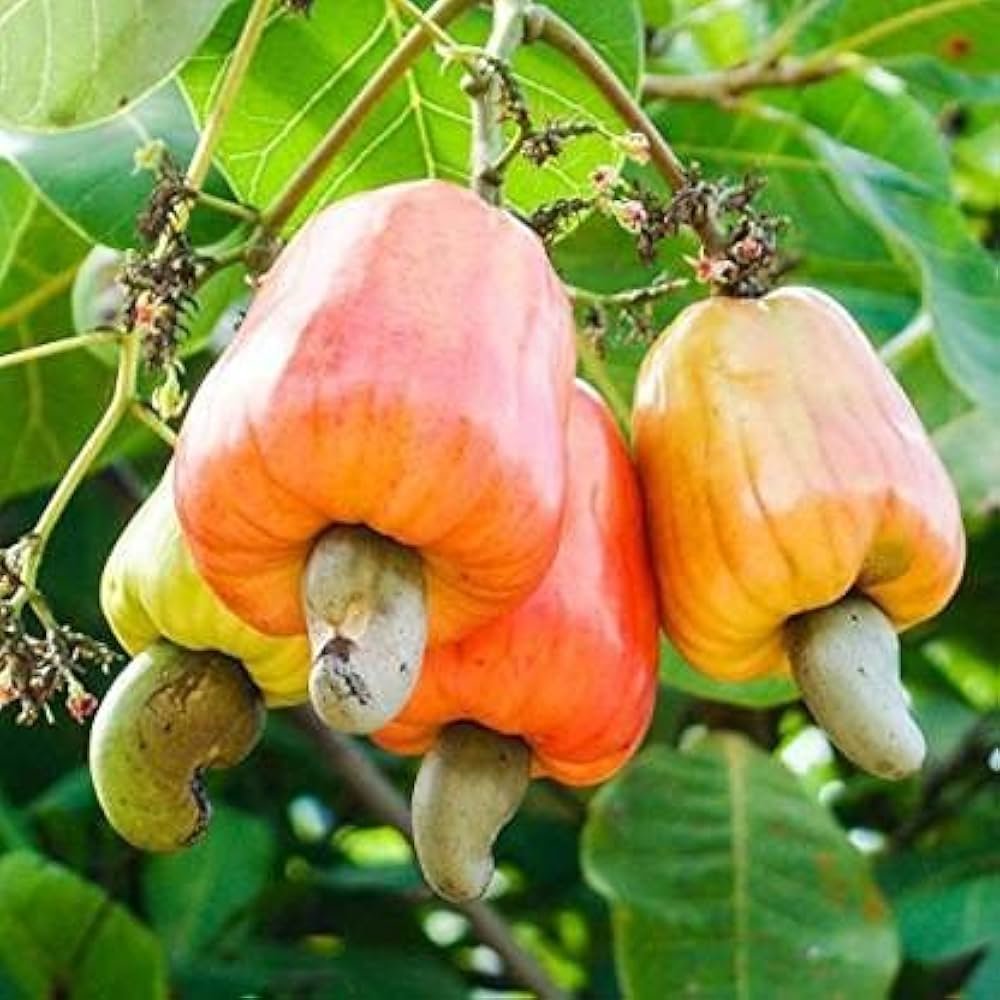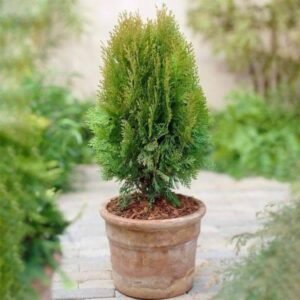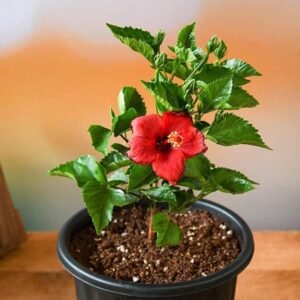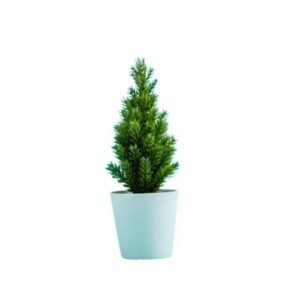Description
KAJU GRAFTED PLANT – A DETAILED DESCRIPTION
Introduction
The Kaju Grafted Plant, commonly known as the Grafted Cashew Plant, is a specially cultivated variety of the Anacardium occidentale species, belonging to the family Anacardiaceae. Native to Brazil but widely grown in tropical regions, the cashew tree is prized for its unique nuts and apple-like fruit. Grafted plants are propagated through horticultural grafting methods to ensure uniformity, early fruiting, high yield, and disease resistance.
Grafted vs. Seed-Grown Cashew Plants
Cashew trees grown from seeds can take up to 7–8 years to produce fruit and may show variability in growth, yield, and quality. Grafted cashew plants, however, are developed by joining a mature scion (a branch or shoot from a high-yielding, quality tree) with a rootstock (a hardy seedling). This ensures that the new plant inherits the superior qualities of the parent tree. The result is a more predictable, fast-growing, and commercially viable tree that starts producing nuts within 2–3 years of planting.
Botanical Features
- Scientific Name: Anacardium occidentale
- Family: Anacardiaceae
- Common Names: Cashew, Kaju (Hindi), Mundiri (Tamil), Jeedipappu (Telugu)
- Plant Type: Tropical evergreen tree
- Height: 5–12 meters (though often pruned in grafted cultivation to 3–4 meters for ease of harvest)
- Lifespan: 20–30 years with proper care
- Leaves: Broad, leathery, oval, and arranged alternately
- Flowers: Small, greenish-pink, and fragrant, appearing in panicles
Fruit and Nut Description
The fruit of the cashew plant is a cashew apple, which is a swollen pedicel (fruit stalk), fleshy and juicy, with a sweet-sour taste. Attached to its bottom is the cashew nut, encased in a kidney-shaped hard shell containing caustic oil (anacardic acid). The nut is the true fruit, harvested and processed for consumption.
Cultivation Conditions
Cashew grafted plants are best suited for tropical climates and are extensively grown in India (especially in Maharashtra, Goa, Karnataka, Kerala, Andhra Pradesh, Odisha, and Tamil Nadu), as well as in countries like Vietnam, Brazil, and parts of Africa.
Climate
- Requires a warm, humid climate with a temperature range of 24°C–28°C.
- Annual rainfall should be between 1000 mm and 2000 mm.
- Cashew trees are drought-resistant but not frost-tolerant.
Soil Requirements
- Well-drained sandy loam or laterite soils with slightly acidic to neutral pH (5.5–7.5) are ideal.
- Avoid waterlogging and heavy clay soils.
Spacing and Planting
- Grafted plants are usually planted with spacing of 7 x 7 meters or 8 x 8 meters.
- Pits of 60 cm x 60 cm x 60 cm are dug, filled with a mixture of soil, compost, and neem cake.
- Planting is preferably done at the onset of the monsoon.
Advantages of Kaju Grafted Plants
- Early Bearing: Grafted plants start fruiting in 2–3 years, much earlier than seed-grown trees.
- High Yield: Grafted trees can yield up to 8–15 kg of nuts per year under ideal conditions.
- Uniform Growth: Genetic consistency ensures uniform nut size, flavor, and maturity.
- Disease Resistance: Selected scions are often resistant to pests and common diseases.
- Better Canopy Management: Compact growth allows easy pruning and harvesting.
- Improved Nut Quality: Nuts are larger and have better taste and commercial value.
Care and Maintenance
Proper care is essential to ensure high yield and plant health.
- Watering: Young plants need regular watering during the dry season. Mature trees are drought-tolerant but benefit from occasional irrigation during flowering and nut development.
- Fertilization: Application of FYM (farmyard manure), neem cake, and NPK fertilizers improves growth. Typically, 750g of nitrogen, 200g of phosphorus, and 200g of potassium are applied annually in split doses.
- Pruning: Done to shape the tree, improve sunlight penetration, and remove diseased branches.
- Weed Control: Regular weeding and mulching are recommended to conserve moisture and reduce competition.
- Pest and Disease Management: Common issues include tea mosquito bugs, stem borers, and powdery mildew. These can be controlled with organic pesticides and proper sanitation.
Harvesting
- The nuts mature 2–3 months after flowering, typically between February and May.
- The mature cashew apple falls to the ground, and the nut is separated for drying and processing.
- Nuts are sun-dried for 2–3 days before shelling.
- A mature grafted cashew tree can yield 10–20 kg of raw nuts annually after 5 years.
Processing of Cashew Nuts
After harvesting, nuts undergo:
- Drying – To reduce moisture and prevent mold.
- Roasting/Steaming – To make shell removal easier.
- Shelling – Manual or mechanical removal of the outer shell.
- Drying Kernels – Further drying of the nut inside.
- Peeling – Removal of the thin testa skin.
- Grading and Packaging – Nuts are sorted by size and quality for market sale.
Economic and Commercial Importance
The Kaju grafted plant is a high-value commercial crop. India is one of the largest producers and exporters of cashew kernels. Cashew nuts are in high demand both domestically and internationally for snacks, confectionery, and cooking.
Cashew apples, though perishable, are also used in some regions to produce fermented drinks, vinegar, and jam.
Cashew farming has significant potential for income generation, especially for small and marginal farmers due to:
- Low maintenance cost
- Long productive life
- Growing demand
- Government support and subsidies in many regions
Varieties of Grafted Cashew
There are several improved cultivars used for grafting, such as:
- Vengurla series (Vengurla-1 to Vengurla-7) – Released by the Konkan Krishi Vidyapeeth
- BPP series (BPP-1, BPP-2) – Bapatla varieties
- NRCC Sel. 2, 3, 4, and 5 – Developed by the National Research Centre for Cashew
- Goa-11, Goa-20 – High-yielding and well-adapted to coastal regions
Farmers often choose a variety based on regional suitability, yield potential, and nut characteristics.
Conclusion
The Kaju Grafted Plant represents a major advancement in cashew cultivation. By combining the advantages of vegetative propagation with modern farming practices, grafted cashew trees offer a profitable and sustainable solution for growers. With rising global demand for cashew products, investing in grafted cashew cultivation can be both economically rewarding and agriculturally beneficial. Whether for a small-scale farm or commercial orchard, the Kaju grafted plant is a smart, future-ready choice for tropical agro-entrepreneurs.





 Jasminum sambac, Mogra, Arabian Jasmine - Plant
Jasminum sambac, Mogra, Arabian Jasmine - Plant 

Reviews
There are no reviews yet.